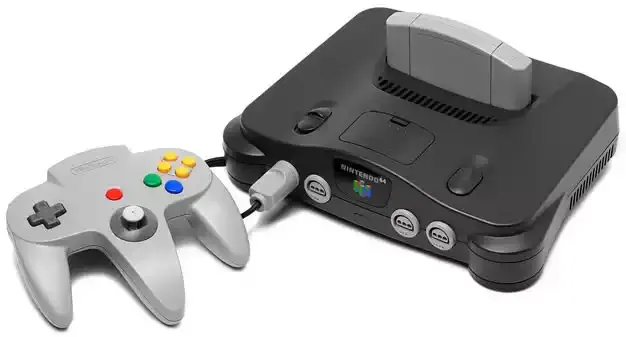Nintendo 64 - On this day
Nintendo has confidently held the third- and fourth-generation video game
market. However, in the mid-1990s, Sony came on the scene with its
PlayStation, and Nintendo did not have competitive hardware to deliver
gaming in three-dimensional worlds. That changed in 1996 with the
arrival of the Nintendo 64 console, which appeared on the European
market exactly 25 years ago.
Nintendo began developing its
fifth-generation console as early as 1993 under the name
Project Reality. Numerous plans have since failed, the name
materialized in the Nintendo Ultra 64, and we received the official
announcement in late 1994. The console was promoted as the first gaming device
to use 64-bit architecture, with little strain with Atari. which also promoted
its Jaguar console with a similar claim.
At the end of 1995, the console was renamed Nintendo 64. A key decision in its
design was the decision to use ROM cartridges instead of the
then-popular CD media. Nintendo's solution proved to be faster for loading
games, but the CD-ROM had more storage capacity which ultimately proved to be
a bad move by Nintendo. Later, Nintendo tried to save the situation with an
add-on called 64DD, but it never came to life as intended.
The
Nintendo 64 console went on sale for $ 200. For that price, customers received
a 64-bit processor clocked at 93.75 MHz, 4 MB of RDRAM memory, support
for 16-bit stereo sound, and a resolution of up to 720 × 576. Along with the
console, two games were initially released - Super Mario 64 and Pilotwings 64,
although by the time of launch in Europe, the offer had expanded further.
The
console's sales results were excellent at the start and quickly surpassed the
sales of the Sega Saturn console. Still, the Nintendo 64 ended up behind
Sony’s PlayStation, primarily thanks to the fact that games were becoming more
complex in the late 1990s and
CD-ROMs proved to be a more convenient format for them.
The cartridges for the Nintendo 64 could hold a maximum of 64 MB of data while
the slower CD-ROM had a capacity of 700 MB. Although the cartridges were more
reliable and did not break down like CD-ROM media, their production was more
expensive, and it was decided that they were harder to pirate. The Nintendo 64
was therefore the last home console to use the classic cartridge format.
The
Nintendo 64 also remained remembered as a console whose controller first had
an additional analog stick next to the standard directional keys. To
many, this controller once looked very strange and awkward, but it was
designed to hold in three different positions. This ultimately did not prove
practical, and Nintendo later abandoned that design.
Despite ending
up behind the PlayStation in sales, Nintendo gave 64 players
some of the best games in the fifth generation of consoles. Super Mario
64, The Legend of Zelda: Ocarina of Time, and GoldenEye 007 are still
considered the most important achievements in their genres. As of 2021,
Nintendo has made some of these games available on the current Nintendo Switch
platform, but only through emulation through the Nintendo Online + Expansion
Pack subscription service.












